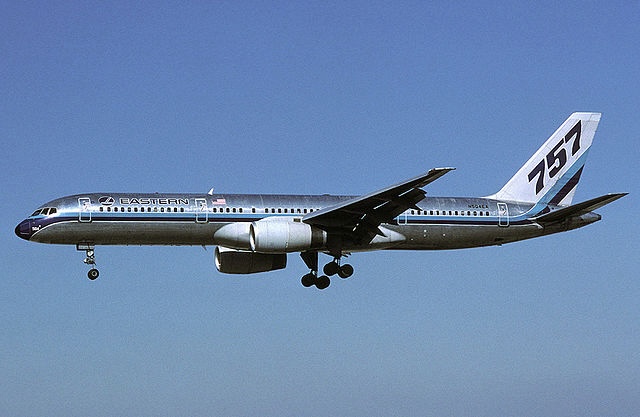Boeing 757
Summary
| Category | Military Transport Aircraft |
| Origin country | 🇺🇸 United States |
| Manufacturer | Boeing |
| First flight | 19 February 1982 |
| Year introduced | 1983 |
| Number produced | 1050 units |
| Average unit price | $85 million |
Description
In the early 1970s, Boeing initiated studies to develop a successor to the narrow-body 727, focusing on improving the 189-seat 727-200. This led to two proposals: a stretched 727-300 and an all-new twin-engine aircraft, code-named 7N7. While the 727-300 offered a cheaper derivative approach, airlines were drawn to the advanced features of the 7N7, including high-bypass-ratio turbofan engines, new flight deck technologies, and improved aerodynamics, which promised lower operating costs. Parallel development efforts for the 7N7 and a mid-size wide-body airliner, code-named 7X7 (later the 767), gained momentum in the late 1970s. By 1978, studies centered on two 7N7 variants: a 160-seat 7N7-100 and a 180-seat 7N7-200. The design incorporated a redesigned wing, under-wing engines, and lighter materials while retaining the 727's forward fuselage and cockpit layout. Eastern Air Lines and British Airways became the first to commit to the 7N7-200 in August 1978, leading to the aircraft's official designation as the 757 in March 1979. The prototype 757 completed its maiden flight on February 19, 1982, and received FAA certification on December 21, 1982, with the initial 757-200 variant entering commercial service with Eastern Air Lines on January 1, 1983.
The 757 is a low-wing cantilever monoplane designed with a conventional tail unit that includes a single fin and rudder. Its wings, swept at 25 degrees, share largely identical features across all variants and are optimized for a cruising speed of Mach 0.8. Each wing is equipped with five-panel leading edge slats, single- and double-slotted flaps, an outboard aileron, and six spoilers. A supercritical cross-section airfoil provides lift across most of the upper wing surface to reduce aerodynamic drag. The airframe incorporates carbon-fiber reinforced plastic wing surfaces, Kevlar fairings and access panels, and improved aluminum alloys, contributing to an overall weight reduction of 2,100 pounds. The flight deck features six Rockwell Collins CRT screens displaying flight instrumentation, alongside an electronic flight instrument system and an engine indication and crew alerting system, allowing the pilots to handle monitoring tasks with increased automation.
The Boeing 757 found widespread use across various operational environments, serving both short-haul domestic routes and transcontinental services within the United States. Its operational strengths included the ability to serve airports with stringent noise regulations and those with size restrictions. ETOPS certification in 1986 expanded its capabilities to mid-range intercontinental routes over the North Atlantic. The 757’s capabilities allowed it to replace aging aircraft such as the 707, 727, DC-8, and DC-9. However, its deployment in Asia was limited due to a preference for larger aircraft with greater passenger capacity. Weaknesses emerged in the early 1990s when studies highlighted wake turbulence characteristics, leading to increased separation requirements. The aircraft was utilized by a variety of customers including mainline U.S. carriers such as Delta Air Lines and American Airlines, European charter airlines, cargo companies like UPS, and government entities such as the U.S. Air Force, which employed it for VIP transport as the C-32.
Main Variants:
-
757-200: The original passenger version, it featured two different exit configurations and could seat up to 239 passengers.
-
757-200PF: The production cargo version of the 757-200, designed for the overnight package delivery market, with a main deck cargo hold capable of carrying up to 15 ULD containers or pallets.
-
757-200SF: This is a passenger-to-freighter conversion, featuring a large cargo door in the forward fuselage and a main deck capable of holding 14 full-sized pallets.
-
757-200M/CB: A convertible version, also known as the 757-200CB (Combi), capable of carrying both cargo and passengers on its main deck while retaining passenger windows and cabin doors.
-
757-300: The stretched version of the 757, designed to serve the charter airline market, extending the fuselage to accommodate up to 295 passengers.
Technical specifications
| Version: C-32A | |
|---|---|
| Maximum speed | 853 km/h (530 mph) |
| Wing area | 181.3 m² (1951.0 sqft) |
| Wingspan | 38.0 m (124.6 ft) |
| Height | 11.0 m (36.2 ft) |
| Length | 47.3 m (155.2 ft) |
| Service ceiling | 12,802 m (42,001 ft) |
| Empty weight | 58,900 kg (129,852 lbs) |
| Max. takeoff weight | 115,666 kg (255,000 lbs) |
| Powerplant | 2 x turbojet Pratt & Whitney PW2040 delivering 18915 kgf each |
Current operating countries
| Country | Units | ||
|---|---|---|---|

|
United States | 4 | |

|
New Zealand | 2 | |
All operators
